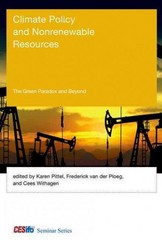Question
QUESTION 1 In which model does labor always gain from trade? a. Ricardian b. Specific-factors c. Heckscher-Ohlin d. All of the above QUESTION 2 If
QUESTION 1
In which model does labor always gain from trade?
| a. | Ricardian | |
| b. | Specific-factors | |
| c. | Heckscher-Ohlin | |
| d. | All of the above |
QUESTION 2
If the marginal product of labor in the paper industry is 20 units, and the price of paper is $2 per unit, then
| a. | the real wage in terms of paper is 10 and the nominal wage is 40 | |
| b. | the real wage in terms of paper is 40 and the nominal wage is 10 | |
| c. | the real wage in terms of paper is 20 and the nominal wage is 10 | |
| d. | the real wage in terms of paper is 20 and the nominal wage is 40 |
QUESTION 3
Optimal consumption after trade in the Ricardian model occurs where
| a. | the indifference curve is tangent to the production possibilities frontier | |
| b. | the indifference curve is tangent to the budget line | |
| c. | consumers are spending the same amount on each good | |
| d. | consumption of good A divided by the price of good A equals consumption of good B divided by the price of good B |
QUESTION 4
Assume that the marginal product of labor in cheese production is 3 in the home country and 1 in the foreign country, while the marginal product of labor in the wine industry is 4 in the home country and 2 in the foreign country. The home country will have a comparative advantage in
| a. | cheese | |
| b. | wine | |
| c. | both cheese and wine | |
| d. | neither cheese or wine |
QUESTION 5
Assume that there are two goods, A and B. The home country has a comparative advantage in the production of good A. What effect will trade have on real wages in the home country?
| a. | Increase the real wage in terms of good A but have no effect on the real wage in terms of good B | |
| b. | Increase the real wage in terms of good B but have no effect on the real wage in terms of good A | |
| c. | Increase the real wage in terms of both goods | |
| d. | Have no effect on the real wage in terms of either good |
QUESTION 6
Trade in goods is a substitute for trade in factors of production is a phrase used to explain
| a. | Goods price equalization in the Ricardian model | |
| b. | Goods price equalization in the Heckscher-Ohlin model | |
| c. | Factor price equalization in the Ricardian model | |
| d. | Factor price equalization in the Heckscher-Ohlin model |
QUESTION 7
In which model is the marginal product of labor constant?
| a. | Ricardian | |
| b. | Specific-factors | |
| c. | Heckscher-Ohlin | |
| d. | None of the above |
QUESTION 8
If the home country exports 40 million bottles of wine and imports 60 million, the index of intra-industry trade will equal
| a. | 40 | |
| b. | 60 | |
| c. | 80 | |
| d. | None of the above |
Step by Step Solution
There are 3 Steps involved in it
Step: 1

Get Instant Access to Expert-Tailored Solutions
See step-by-step solutions with expert insights and AI powered tools for academic success
Step: 2

Step: 3

Ace Your Homework with AI
Get the answers you need in no time with our AI-driven, step-by-step assistance
Get Started


